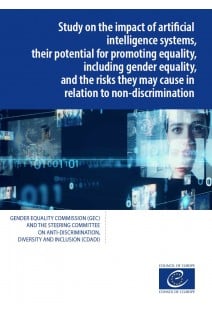GENDER EQUALITY COMMISSION (GEC) AND THE STEERING COMMITTEE ON ANTI-DISCRIMINATION,DIVERSITY AND INCLUSION (CDADI)
As the deployment of algorithmic systems and AI applications is growing in size and significance, algorithmic discrimination has become a matter of rising public concern. Regulatory responses are currently being devised across the globe, including in the European Union.
In this perspective, this study investigates the discriminatory risks of algorithmic technologies, the specific legal responses to algorithmic discrimination that can be offered by the Council of Europe, and the potential of these technologies for promoting equality, including gender equality.
INTRODUCTION: THE CONTEXT SECTION 1 UNPACKING ‘MACHINE BIAS’: HOW CAN ALGORITHMIC TECHNOLOGIES LEAD TO DISCRIMINATION?1) What is AI?
2) What is algorithmic bias?
3) The discriminatory impact of AI: some concrete examples
4) What makes algorithmic discrimination different?
5) Addressing algorithmic discrimination: best practices and their limits
6) Representation and participation issues: The lack of diversity and inclusion in the AI industry
SECTION 2 THE LEGAL AND POLICY LANDSCAPE IN EUROPE: STRENGTHS AND SHORTCOMINGSI. Discrimination and equality: legal and policy instruments and their limits
II. Privacy and data protection law: Fairness and accuracy
III. AI sectoral regulations: strengths and limits for promoting equality and addressing discrimination
SECTION 3 PROMOTING EQUALITY IN AND THROUGH THE USE OF AI: THE ROLE OF POSITIVE ACTION AND POSITIVE OBLIGATIONSI. Revisiting existing rules in light of new power asymmetries
II. An obligation to promote equality in and through the use of algorithmic systems: the role of positive action and positive obligations
SECTION 4 RECOMMENDATIONSPolicy recommendations: Towards human-rights-based approach to AI







